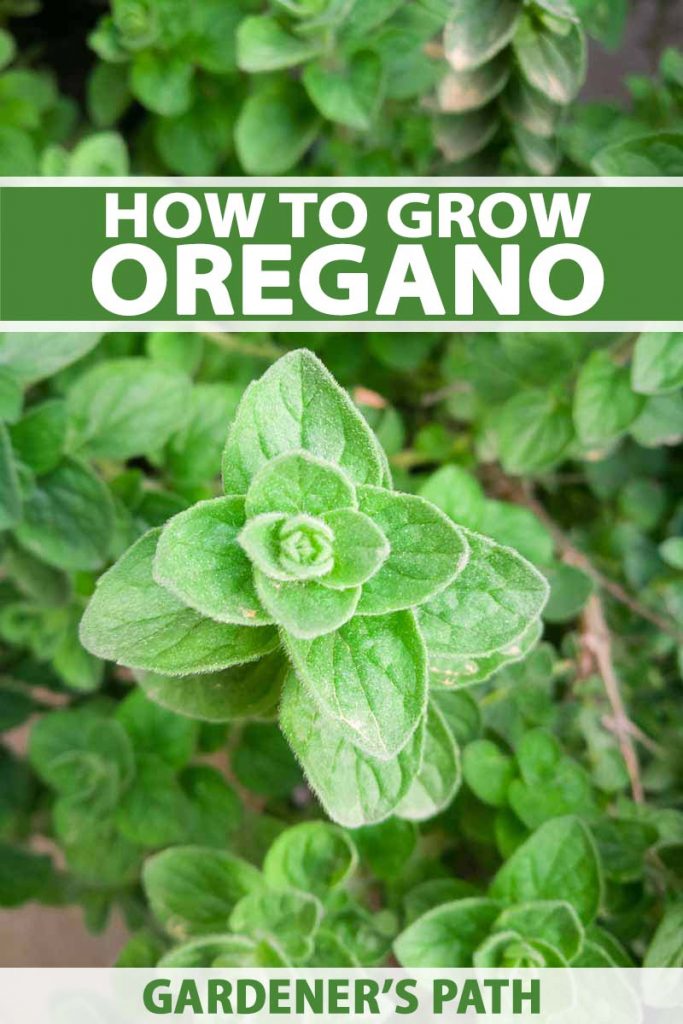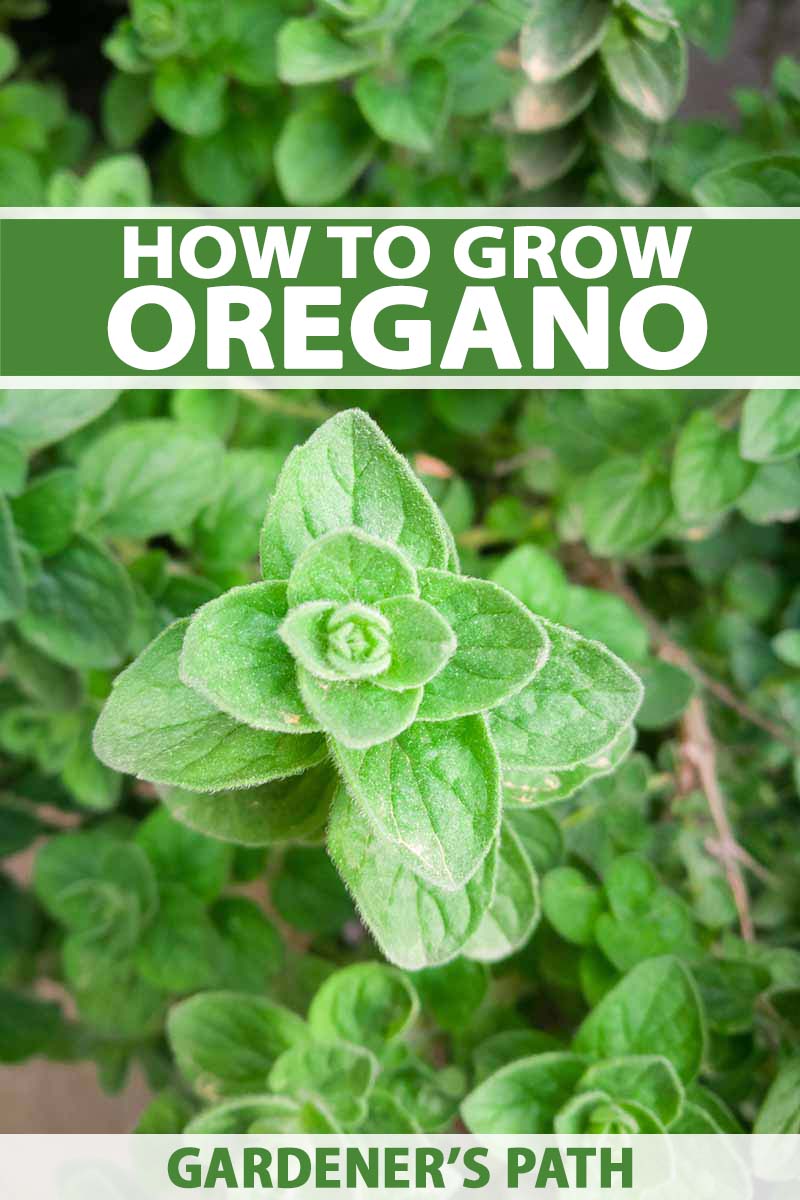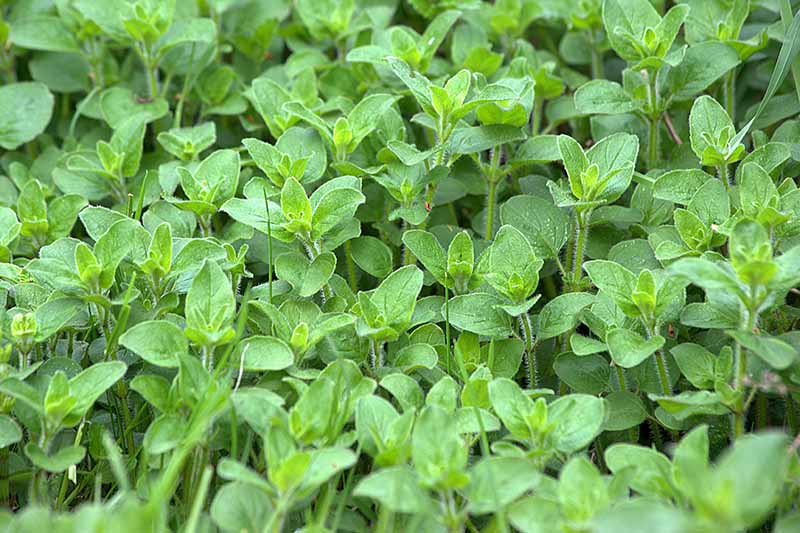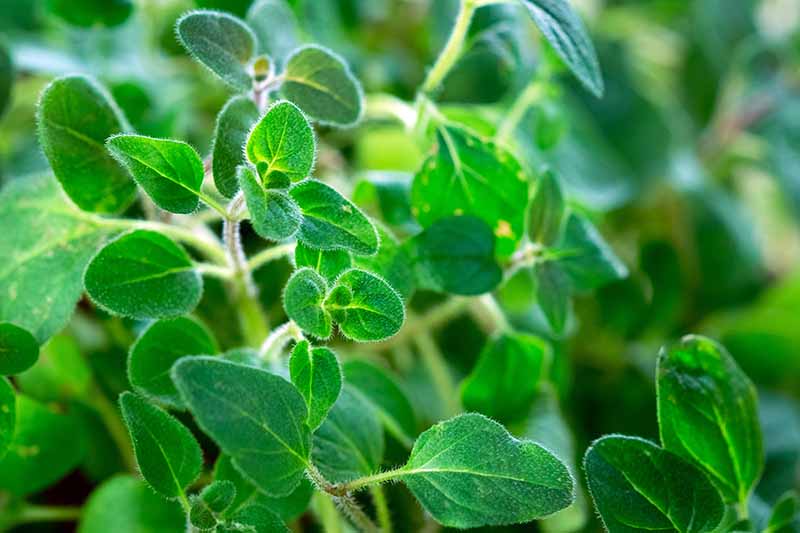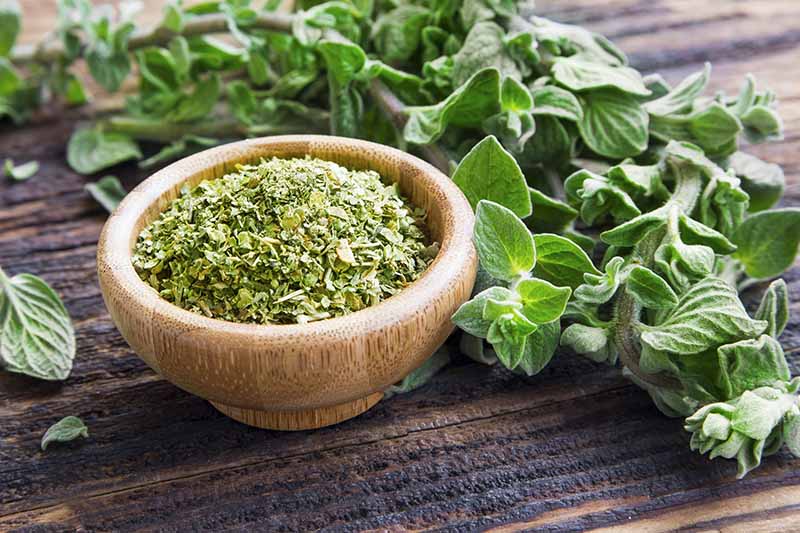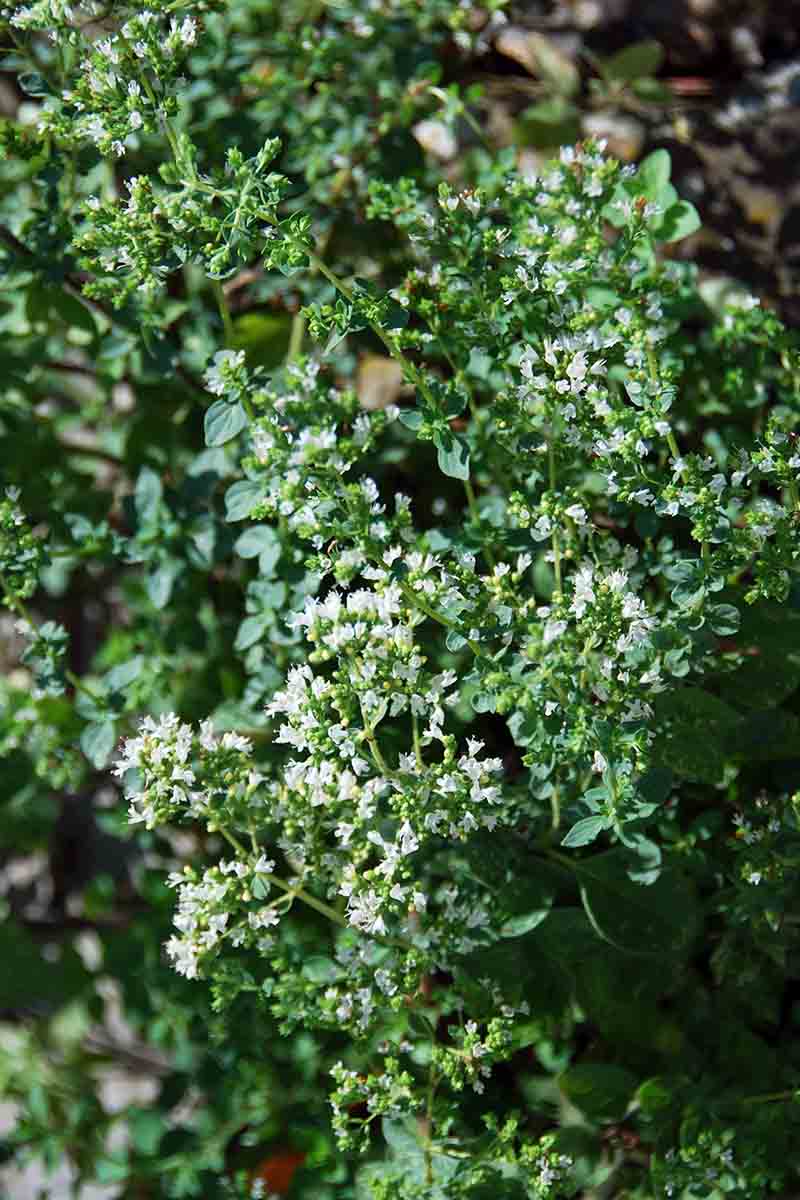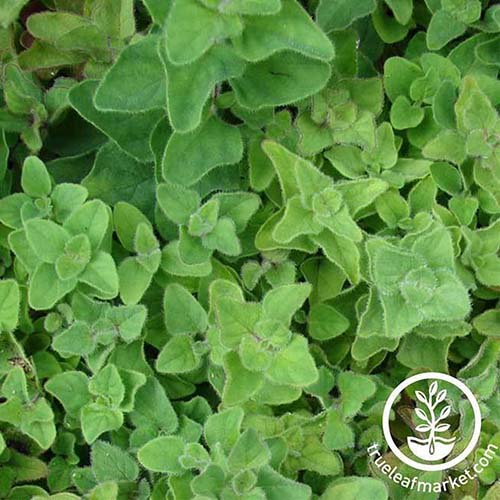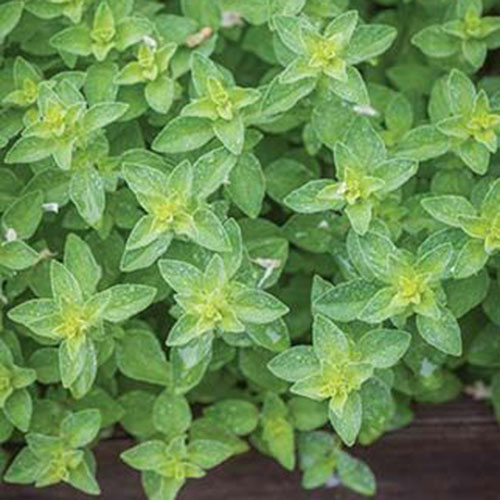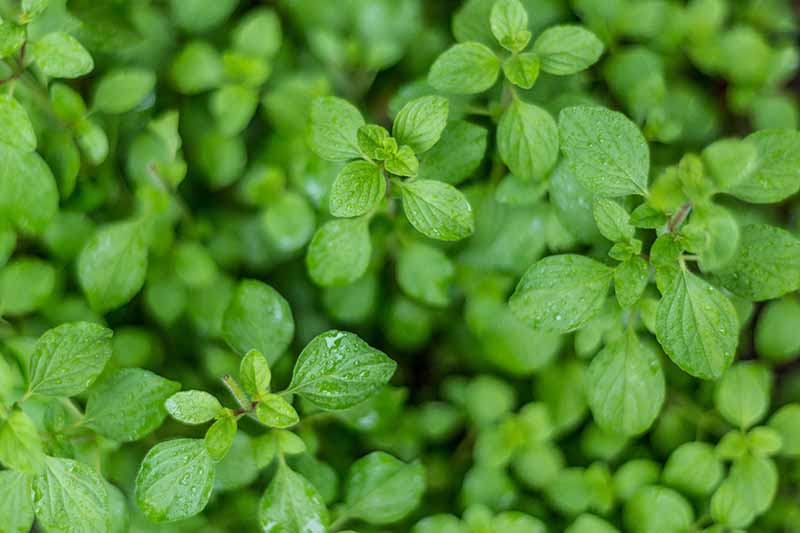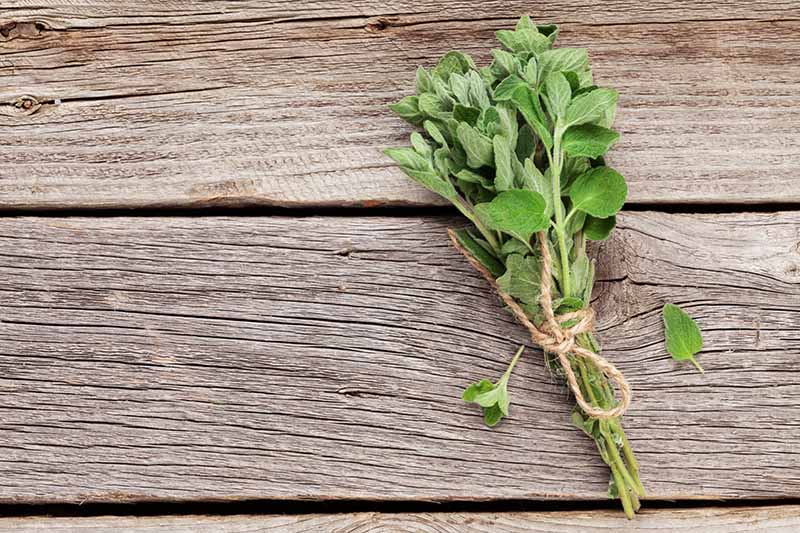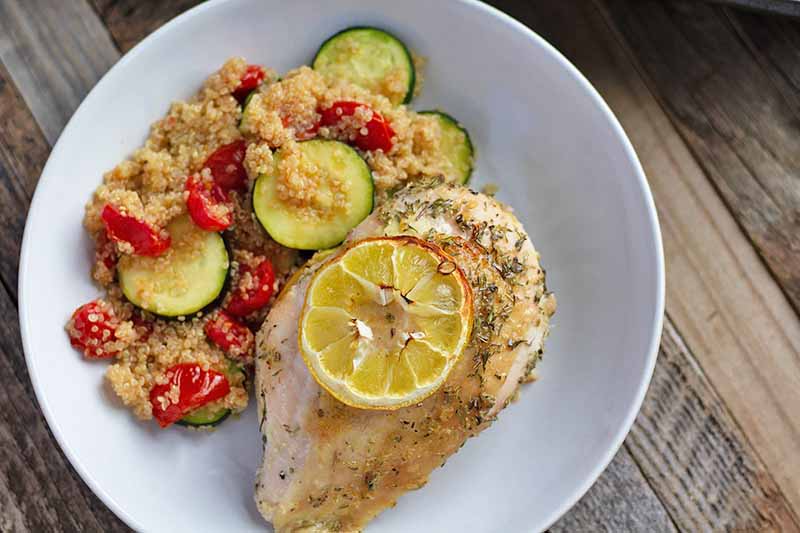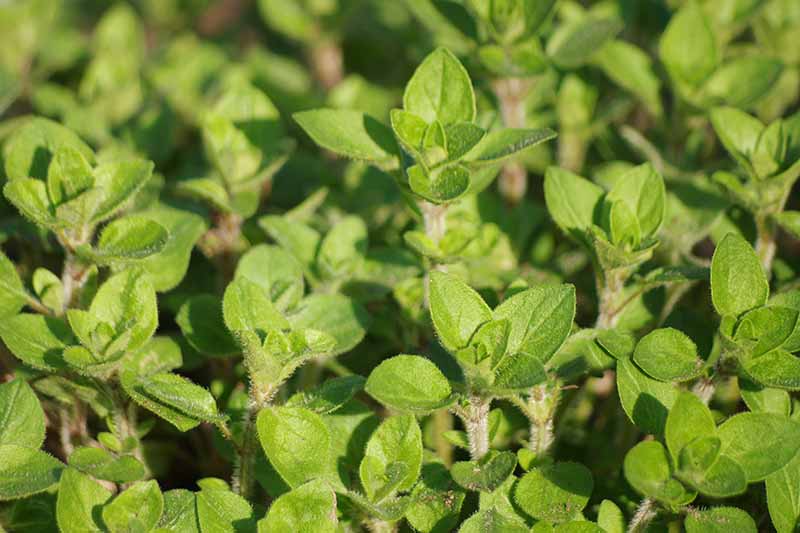A staple of Italian-American cooking, oregano is found in everything from pizza and grilled meats to salad dressings and sauces, with delicious results. In fact, we like it so much that, according to some sources, Americans consume more than 14 million pounds of this tasty herb every year. We link to vendors to help you find relevant products. If you buy from one of our links, we may earn a commission. Its leaves are oval and fragrant. Small, edible blooms in pink, lavender, or white form on spikes in mid- to late summer. Flowers have a more mild flavor than the leaves, and make a pretty addition to summer salads. Hardy in USDA Zones 5-10, this plant can be grown as an annual in more northern climates. Let’s learn how you can add this flavorful, easy-to-grow herb to your garden. You may see oregano mistakenly referred to by any number of names that have “marjoram” in them, including winter sweet marjoram, wild marjoram, sweet wild marjoram… You get the picture.
However, while they are both members of the mint family, marjoram is indeed a different species with the botanical name O. majorana. To add a little additional confusion, there are also two other, unrelated herbs with “oregano” in their names. Mexican oregano is Lippia graveolens, a member of the verbena family. Check out our full guide to growing Mexican oregano. And Cuban oregano, Plectranthus amboinicus, is a member of the mint family, with a distinctive camphor, or menthol-like aroma. A number of different varieties of O. vulgare are available, all with slightly different flavor profiles. The most commonly used in American kitchens are the Greek O. vulgare subsp. hirtum, – previously classified as its own species, O. heracleoticum – and Italian varieties. Italian cultivars sold commercially are often hybrid crosses between O. vulgare and O. majoricum, resulting in a mild, less bold flavor than the Greek type. Syrian oregano, O. syriacum, a different species, is native to the Middle East. With its intensely aromatic overtones, it is a common addition to the spice mix za’atar.
Cultivation and History
Greece, the birthplace of so much that is good in our universe, also gave us oregano. In ancient Greece, the aromatic herb was described as “joy of the mountain,” and said to have been created by the goddess Aphrodite.
Citizens in the birthplace of democracy also believed that oregano safeguarded good luck and good health. In that long-ago culture, the herb symbolized joy and was often planted near homes to ward off evil spirits. The conquering Romans appreciated this culinary herb and carried it with them, spreading it hither and yon as they invaded territory after territory. Interestingly, oregano did not find huge popularity in the United States until soldiers stationed in Italy returned from World War II and brought back a taste for the herb they’d come to love in pizza sauce.
Propagation
Oregano can be propagated from seed, cuttings, or by dividing existing plants.
From Seed
Direct sow outdoors when daytime temperatures hit 70°F. Place seeds on top of the soil and lightly press them into the surface. Don’t cover the tiny seeds – they need light to germinate, which should take about 4 days. Sow seeds in rows about 20 inches apart and thin seedlings to 8 inches. You can also start seeds indoors at any time of the year, provided you’ve got a sunny location, or a grow light. Transplants should be set out in the garden when all risk of frost has passed. Keep in mind that saved seeds may not produce a plant identical to the mother plant. You would have to take a cutting in order to achieve that.
From Cuttings
In the spring, use a sharp knife or garden shears to cut four- to five-inch pieces of softwood stem at a 45-degree angle. Remove the leaves from the bottom two inches. Put cuttings in either water or a peat moss and vermiculite mixture. Change the water every two to three days, if you choose that option. If planting in a soilless mix, make sure you keep it moist. Place the cuttings in an area with bright light, but not in direct sun. Cuttings will be ready to transplant in four to five weeks, when the roots are about an inch long.
Root Division
Oregano plants are vigorous growers and easy to divide. The best time to do this is in spring or at the beginning of the fall, when the ground is still warm. Simply dig up an existing plant and cut it through the root ball into two or more sections, then replant the divisions in pots or a different area of your garden. For more information see our guide to dividing perennials.
How to Grow and Best Uses
Like vacationers in Cabo San Lucas, oregano enjoys full sun. The plant also needs well-drained soil with a pH of 4.5 to 8.7, but the soil doesn’t need to be amended with anything special otherwise. Sandy loam, for example, is fine.
Fairly tolerant of hot and dry conditions, oregano appreciates about an inch of water per week; be sure to let the soil dry out completely in between waterings. For this reason, it also grows very well in containers, where the soil tends to dry out more quickly. O. vulgare doesn’t require extra fertilization. In addition to its culinary uses, oregano makes a very nice ground cover. It also makes an attractive border front and looks terrific in rock gardens. Some gardeners grow it in containers, where it spills nicely over the sides. This plant can get leggy if you’re not pinching it back or harvesting the leaves often enough. So even if you don’t plan to make pizza sauce every night, be sure to trim it regularly throughout spring and summer to encourage bushy growth.
If you want more plants, you can let it flower and go to seed in mid- to late summer, as it reproduces easily. If you want more control over this than you would if you simply allowed the birds and the wind to handle the reseeding for you, collect the seed heads when they are completely dry, shake them into a paper bag or envelope, and store them in a cool, dark place until you’re ready to plant.
In cooler regions, you can cut them back right after the first frost, and mulch heavily around and over your plants; they’ll come roaring back in springtime.
Growing Tips
Plant in full sun Take care not to overwater Trim before plants go to seed for a fuller form
Managing Pests and Disease
While oregano doesn’t usually suffer from any serious insect or disease problems, there are a few annoyances to keep an eye out for.
Cleopatra
‘Cleopatra,’ a winner of the All-America Selections Edible Award in the Vegetable category in 2015, has a light peppermint flavor, and is milder than the Greek or Italian varieties. With attractive silvery-gray foliage, and tiny white flowers, it does double duty by providing ornamental interest in the garden.
‘Cleopatra’ With a creeping, trailing habit, it’s equally suited to growing in the herb garden, out back as a fragrant, edible ground cover, or in pots on the deck to be brought indoors to overwinter on a sunny windowsill. Packets of 500 seeds are available from Burpee.
Greek
This classic variety, with its characteristic spicy, earthy flavor, is perfect for adding to a variety of dishes.
O. vulgare subsp. hirtum This is considered by many to be the “true oregano,” and if you allow it to go to flower, it also features pretty white blooms. Find seeds in a variety of quantities for O. vulgare subsp. hirtum from True Leaf Market or Eden Brothers. Read more about growing Greek oregano here.
Hot and Spicy
A cultivar of Greek oregano, ‘Hot and Spicy’ is as its name suggests, a more fiery version of the classic. With an intense, slightly bitter flavor, this one works well when added to salsas, and spicy chili dishes. This variety grows in a mounded form, with diminutive, delicate pink flowers that emerge in midsummer.
‘Hot and Spicy’ In spring, the fragrant leaves are chartreuse, turning a more grayish-green as the season progresses. Live plants are available in packs of 3 from Burpee.
Italian
With slightly larger leaves than the Greek variety, Italian oregano has a mildly aromatic flavor, and serves as a more delicate addition to sauces, soups, and stews. This variety has stiff woody stems and grows in an upright fashion, to an average height of 18 inches tall, with a spread of 20 inches. Flowers appear in early to midsummer and can be pink, purple, or white.
Italian Oregano It’s sometimes also referred to as “true oregano,” depending on who you ask. Plants in packs of 3 are available from Burpee.
Insects
These are the main pests that could cause a bit of trouble with your oregano plants.
Aphids (Aphidoidea)
Use blasts of water or insecticidal soap to get rid of these tiny, soft-bodied, pear-shaped pests that suck the life out of plants. They cause mottled leaves that turn yellow or brown and wilting foliage, stunting growth, and potentially even killing your plants. Another control method for aphids on oregano is to introduce beneficial insects such as ladybugs, which are naturally attracted to the plant and enjoy feasting on these pesky insects.
Leafminers (Lyriomyza spp.)
Leafminers leave narrow, white trails or white blotches on leaves. These 1/8-inch-long flies can be yellow, dark gray, or black. The fly larvae feed on the insides of plant leaves. Spray with neem oil to get rid of these pests. Read more about identifying and controlling leafminers here.
Spider Mites (Tetranychidae)
Though these miniature bugs are so tiny you may not be able to see them clearly with the naked eye, you will probably notice little webs dotted with white specks if you have an infestation.
They damage plants by sucking out fluids, causing leaves to turn brown and fall off the plant. Treat a spider mite infestation by spraying with neem oil. Find more information about controlling spider mites here.
Disease
Mint rust (Puccinia menthae) is a fungal disease that may plague oregano. Look for small orange, brown, or yellow pustules on the undersides of leaves. This disease can cause new shoots to be pale, and large areas of leaf tissue can die and drop. Try treating mint rust with a fungicide. If damage is extensive, you may have to pull up and destroy affected plants.
Harvesting
When plants are at least 45 days old, you can begin harvesting leaves or sprigs. If cutting a sprig, be sure to leave at least one set of leaves on the stem for regrowth.
If an arctic blast is nigh, and you must harvest or abandon your crops, cut your plants back to the ground and bring the stems indoors to dry.
Preserving
You have a couple of options to preserve oregano leaves. You can use a dehydrator, if you have one. If you don’t, check out this guide to the best dehydrators on the market today on our sister site, Foodal. Or you can hang bunches of stems in a cool, dry place. Place a perforated paper bag over the bunches to catch any bits that fall off, and to keep dust off the leaves.
Store the dried leaves in an airtight plastic or glass container in a cool, dark location. They will retain their flavor for about six months. You can find more information on drying herbs in our guide. Or why not try making an oregano-infused oil? This is an easy way to add a touch of flavor to salad dressings, to drizzle on bread, or even to share the fruits of your harvest with friends. Our sister site, Foodal, has full instructions.
Recipes and Cooking Ideas
The flavor of oregano matches particularly well with that of garlic and fresh tomato, and the three are heavily relied upon in Italian cooking, presumably since the time when the herb first made the short hop across the Ionian Sea from Greece to Italy. So, let’s start our culinary enjoyment of oregano with grilled eggplant rollatini with lemony herbed ricotta, from our sister site, Foodal. Oregano melds beautifully with other herbs in this comforting bite of Italia. Continuing our tour of the Mediterranean, let’s move to Greece next with this recipe for chicken gyros with tomato salad and feta, also from Foodal. Back home in the US, how does citrus roasted chicken sound? This recipe, too, comes from Foodal. Lemon and honey join oregano and other herbs for a satisfying main course.
Quick Reference Growing Guide
An Easy to Grow, Fragrant Addition to the Kitchen Garden
This fragrant herb is among the most commonly used in American kitchens, and how lucky are we that it’s so easy to grow? It’s not particular about soil, and it can withstand drought, heat, and even fairly cold temperatures. Trim it up to encourage bushiness, and watch out for a few little pests. That’s all there is to it.
If you are planting an herb garden, you’ll need these guides next:
Rosemary: How to Grow This Classic Garden Herb Grow Common Sage, a Mediterranean Culinary Staple How to Grow Horehound How to Grow Parsley in Your Home Herb Garden
Photos by Fanny Slater and Kelli McGrane © Ask the Experts, LLC. ALL RIGHTS RESERVED. See our TOS for more details. Originally published on March 7, 2020. [lastupdated]. Product photos via Burpee, Eden Brothers, and True Leaf Market. Uncredited photos: Shutterstock. With additional writing and editing by Allison Sidhu and Clare Groom.
